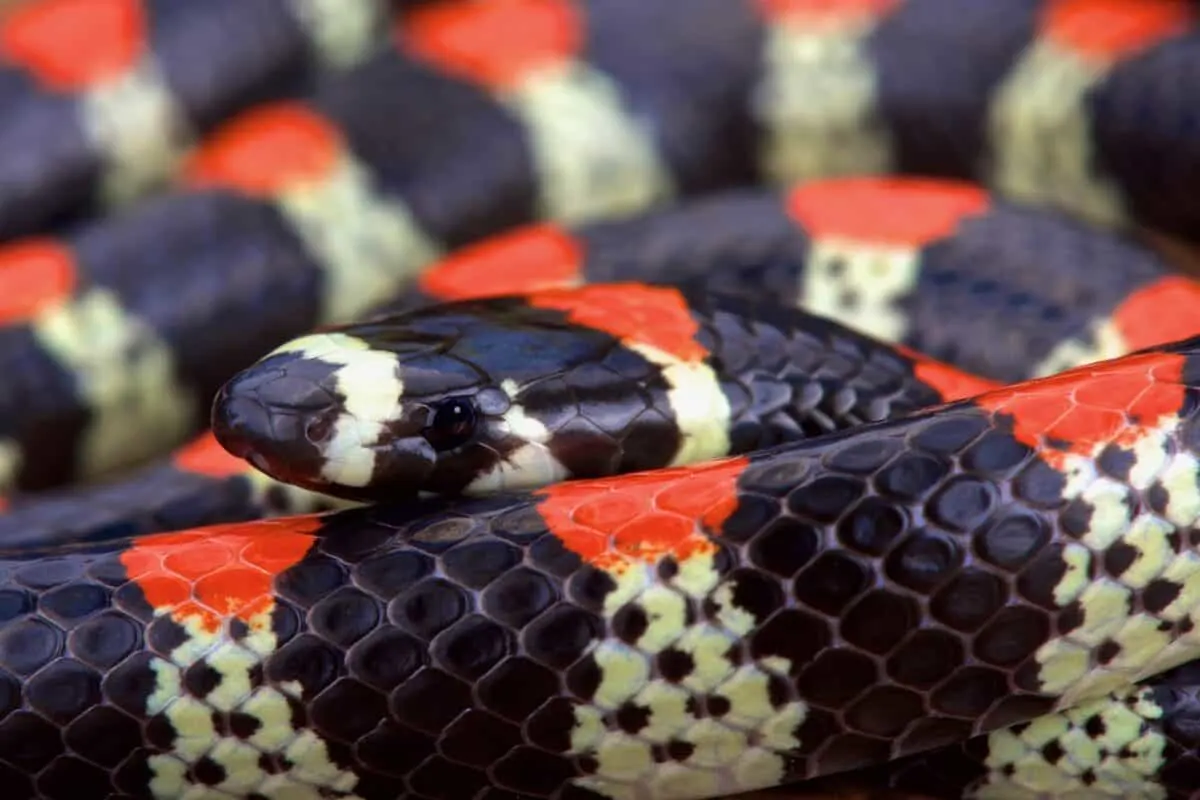Coral snakes are pretty to look at with their banded pattern – but you should keep your distance as their bite can be incredibly toxic.
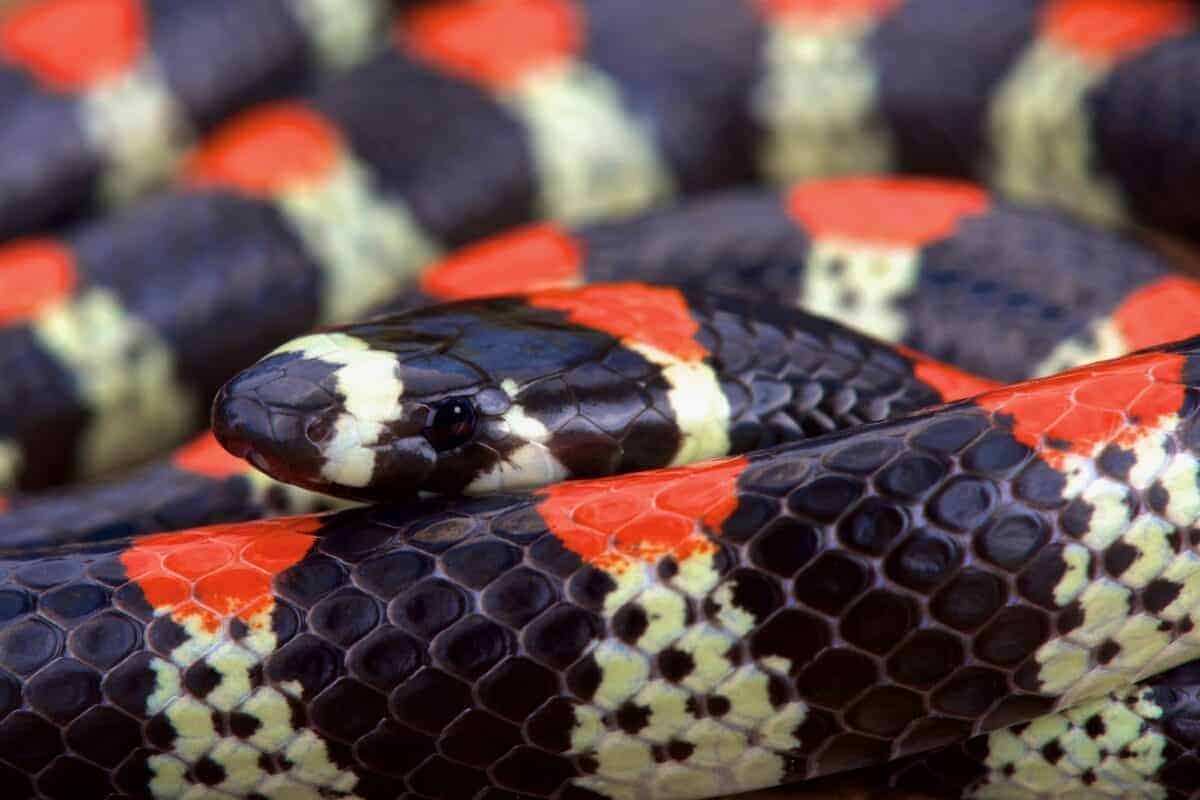
They are venomous reptiles belonging to the family Elapidae, known for their vibrant coloration of red, yellow, and black bands. These scaly creatures are distributed across various regions worldwide and are renowned for their potent neurotoxic venom.
Want to compare to another snake bite? Understanding coral snake bites and their impact on humans is crucial for public health and safety. Prompt recognition of symptoms, appropriate first aid, and access to medical treatment are vital for minimizing the potential complications associated with coral snake bites.
In this post, you’ll gain knowledge on the symptoms, immediate actions, medical treatments, recovery process, long-term effects, and preventive measures. Essentially, we’ll cover everything you need to know in case you should fall victim to a coral snake.
Key Points
- Coral snakes are venomous reptiles belonging to the family Elapidae, known for their vibrant coloration of red, yellow, and black bands.
- Coral snakes are slender and venomous, typically measuring 2 to 4 feet long.
- After a coral snake bite, initial symptoms at the bite site may include mild pain, redness, and swelling.
- Individuals with coral snake bites will require hospitalization to closely monitor their vital signs, including heart rate, blood pressure, and oxygen saturation.
- If coral snake bites result in physical impairments, such as muscle weakness or limited mobility, rehabilitation, and physical therapy may be recommended.
Understanding Coral Snake Bites
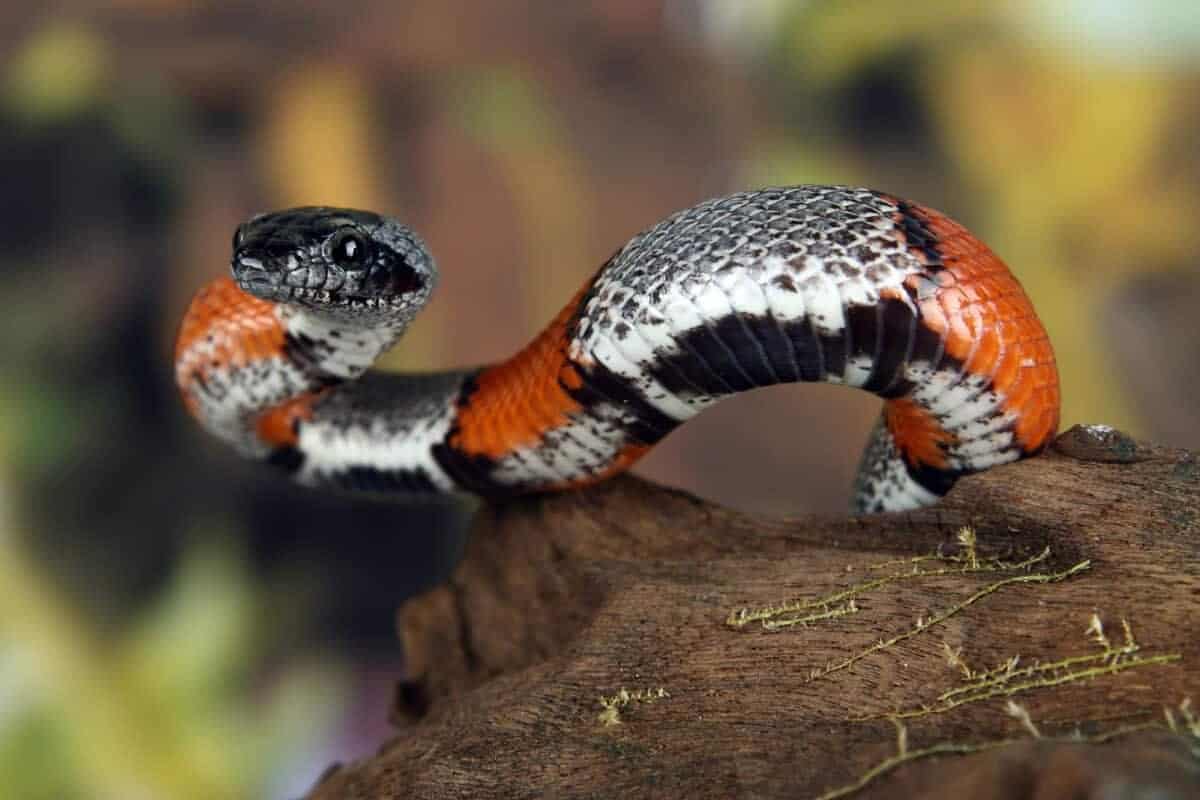
Description of Coral Snakes and their Venom
Coral snakes are slender and venomous, typically measuring 2 to 4 feet long. They possess a venom with high neurotoxicity, which directly impacts the nervous system.
Coral snake bites in humans usually occur when individuals accidentally come into contact with the snake while walking, gardening, or handling firewood. The snakes have small fangs, and their bites may be painless, making them difficult to detect immediately.
Prevalence and Risk Factors
Coral snake bites are relatively rare compared to bites from other venomous snakes. However, individuals who reside or spend time in areas inhabited by coral snakes, such as certain regions in the United States, should be aware of the potential risk. (read about the most venomous snakes in the U.S. here.)
Factors that increase the likelihood of bites include engaging in outdoor activities without taking necessary precautions – such as learning how to identify various types of snakes and knowing whether they’re venomous or not.
Symptoms of Coral Snake Bites
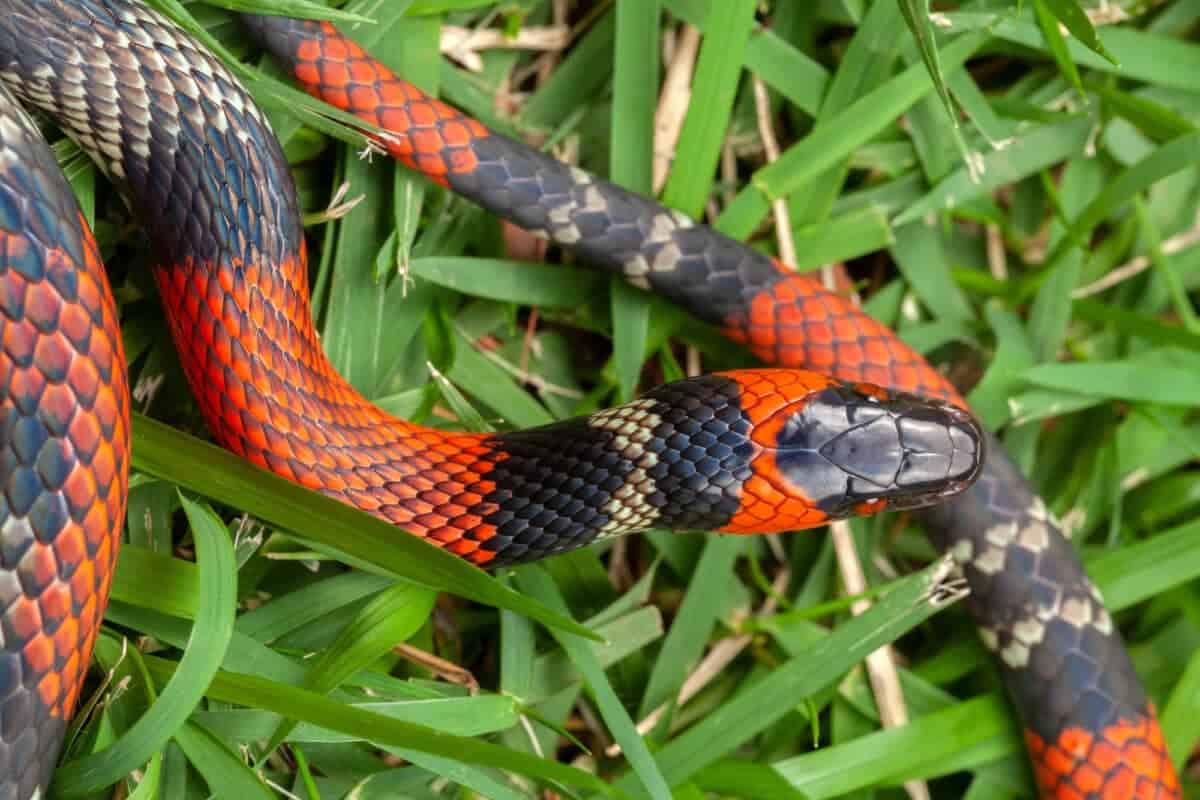
Initial Symptoms at the Bite Site
After a coral snake bite, initial symptoms at the bite site may include mild pain, redness, and swelling. However, these local symptoms are not always present or easily noticeable.
Systemic Symptoms and Their Progression
As the venom spreads through the body, systemic symptoms may develop. These can include weakness, dizziness, nausea, vomiting, sweating, and difficulty breathing.
In severe instances, individuals affected by a coral snake bite may encounter life-threatening complications such as respiratory failure, paralysis, and cardiac arrest.
Neurological Symptoms and Complications
Neurological symptoms may manifest as tingling sensations, muscle weakness, blurred vision, difficulty swallowing, and speech impairment. If left untreated, coral snake venom can lead to profound neurological complications, affecting motor function and potentially resulting in long-term disabilities.
Importance of Recognizing the Symptoms Promptly
Prompt recognition of coral snake bite symptoms is crucial for initiating immediate medical intervention. Timely identification and prompt treatment greatly enhance the likelihood of a favorable outcome and reduce the potential for long-term complications.
Immediate Actions and First Aid
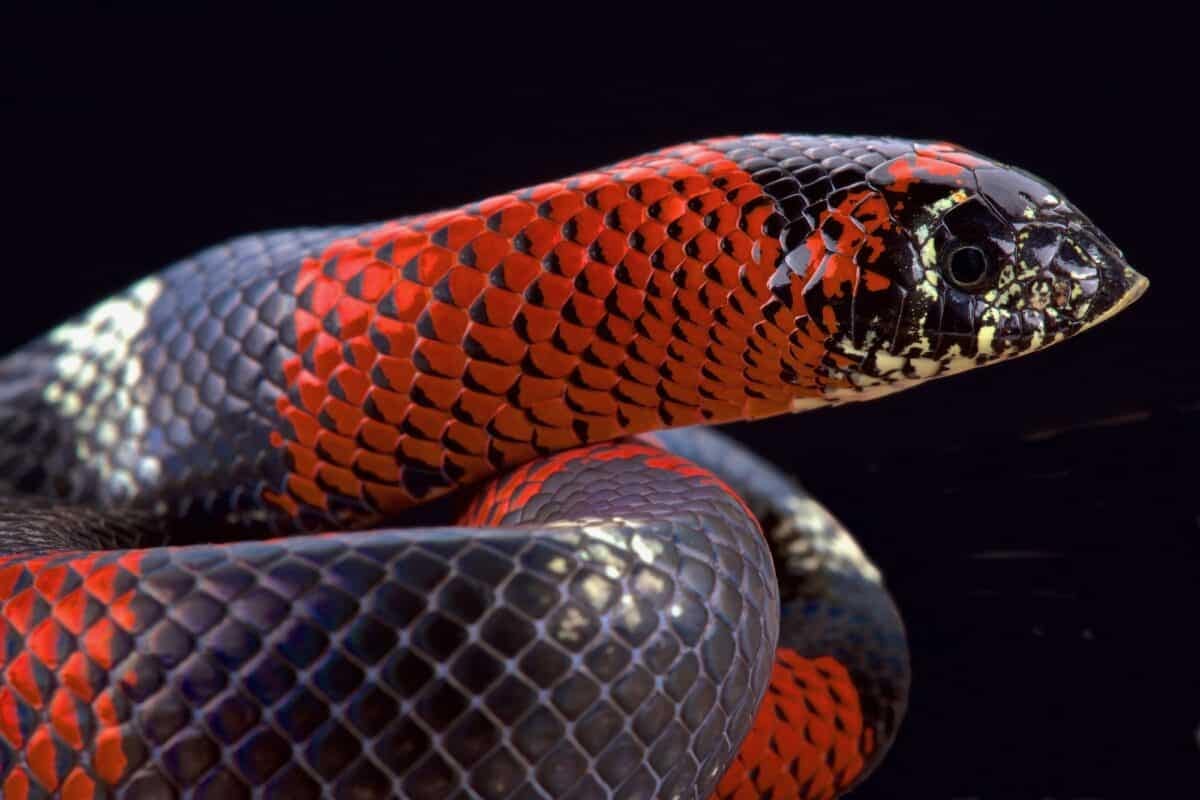
Safety Precautions
The safety of the victim and others nearby should be the top priority. Encourage the victim to remain calm and still to prevent the venom from spreading rapidly through the bloodstream. Keep bystanders away from the snake to avoid additional bites.
Call for Medical Assistance
Immediately call emergency services or local poison control centers to seek professional medical help. Provide them with accurate information about the incident’s location, the snake’s appearance if identified, and the symptoms observed in the victim.
Proper Positioning and Immobilization of the Affected Limb
While awaiting medical help, it’s essential to position and immobilize the affected limb to prevent further venom spread.
In the event of a coral snake bite on an arm or leg, it is vital to keep the affected limb positioned at or slightly below the level of the heart. Immobilize the limb using a splint or a makeshift immobilization device like a sturdy board or rolled-up magazine. This helps minimize the movement and potential spread of venom, promoting better outcomes.
Control Bleeding and Swelling
Apply a clean cloth or sterile dressing to the bite site to control bleeding. Avoid applying a tourniquet or using suction devices, as these methods are ineffective and may cause additional harm. Minimize movement and elevate the limb, if possible, to reduce swelling.
Medical Treatment and Recovery Process
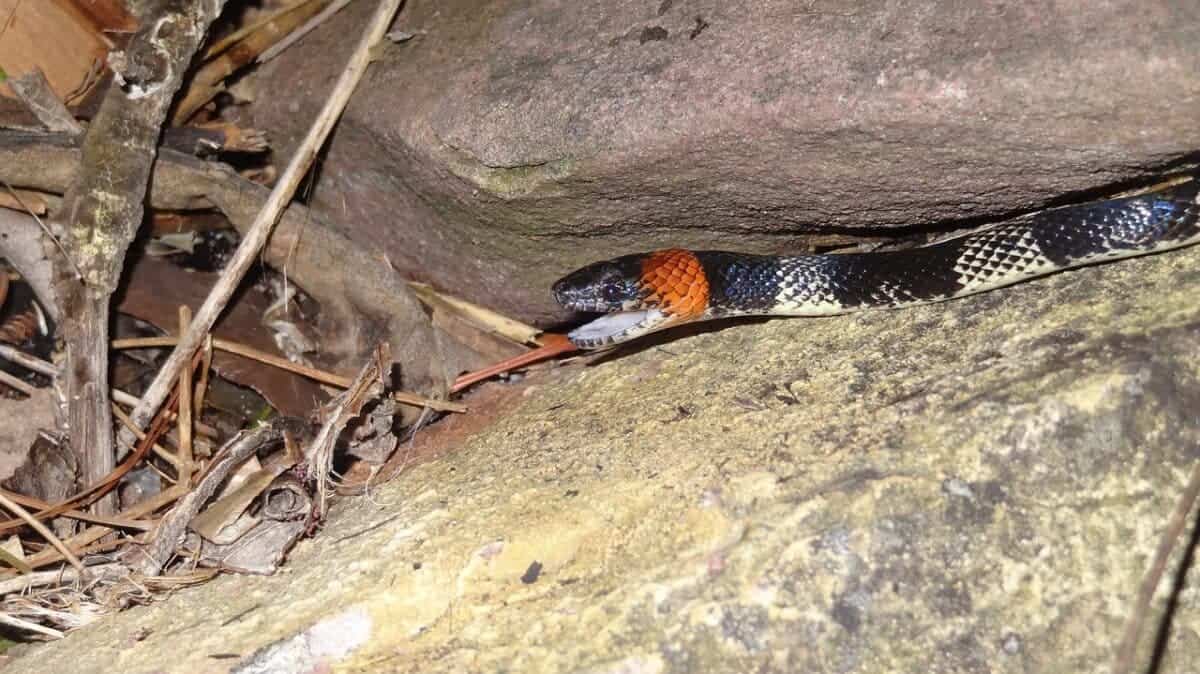
Antivenom
The primary treatment for coral snake bites is antivenom, which functions by counteracting the effects of the venom and halting any additional harm.
Healthcare professionals will administer antivenom intravenously, considering the severity of symptoms and monitoring the individual’s response closely. This intervention aims to neutralize the venom and promote the recovery process.
Assessing Breathing and Circulation
Upon arrival at the hospital, medical professionals will assess the victim’s vital signs, airway, breathing, and circulation. They may provide supplemental oxygen, assist with ventilation, and ensure adequate blood flow to vital organs.
Hospitalization
In most cases, individuals with coral snake bites will require hospitalization to closely monitor their vital signs, including heart rate, blood pressure, and oxygen saturation. Continuous monitoring ensures prompt intervention if any complications arise.
Antivenom Therapy and Potential Side Effects
Antivenom therapy aims to counteract the effects of the coral snake’s venom. Although antivenom is generally considered safe and effective, it is important to note that there can be instances where allergic reactions or other side effects occur. Healthcare professionals will closely monitor the individual for any adverse reactions.
Pain Management
During the recovery process, healthcare professionals will manage pain with appropriate analgesics. Supportive care, such as intravenous fluids, wound care, and nutrition, will promote healing and minimize complications.
Aftercare
Importance of Medical Follow-up Appointments
After initial treatment, individuals need to attend follow-up appointments as their healthcare provider recommends. These appointments allow for continued monitoring of symptoms, assessment of healing progress, and adjustment of treatment plans if necessary.
Rehabilitation for Mobility and Function
If a coral snake bite results in physical impairments, such as muscle weakness or limited mobility, rehabilitation and physical therapy may be recommended. These interventions restore function, strength, and flexibility through targeted exercises and medicines.
Psychological Support
Coral snake bites can be traumatic experiences, and individuals may require psychological approval to cope with the emotional aftermath. Counseling, support groups, and therapy can help address anxiety, fear, and post-traumatic stress related to the incident.
Long-Term Effects
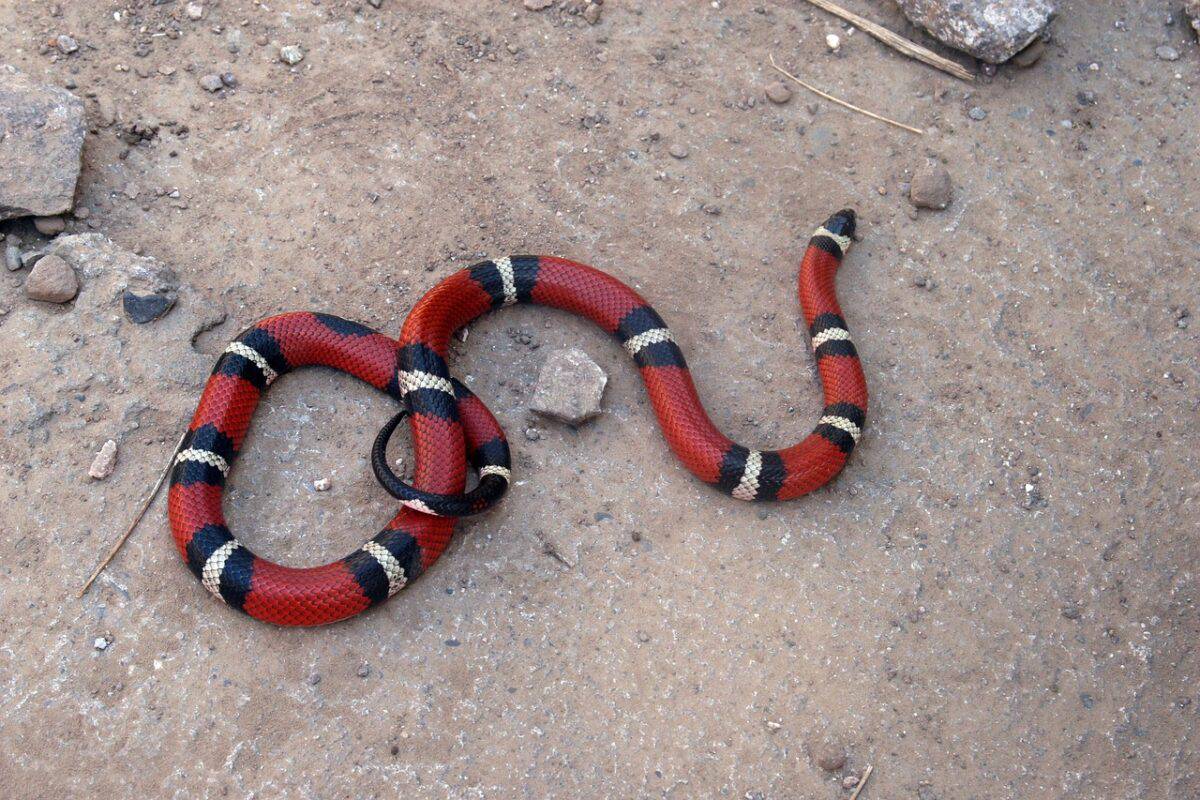
Chronic Pain and Nerve Damage
Some individuals may experience chronic pain or nerve damage from coral snake bites. Sustained pain management strategies and rehabilitation techniques may be necessary to enhance the individual’s quality of life.
These interventions aim to alleviate pain and discomfort over time while also improving overall well-being and functionality.
Scarring and Cosmetic Considerations
Coral snake bites can leave scars at the bite site, which may have cosmetic implications. Proper wound care during the recovery process can help minimize scarring.
Individuals can explore cosmetic procedures or treatments, such as scar revision or laser therapy, to improve the appearance of scars if desired.
Preventive Measures
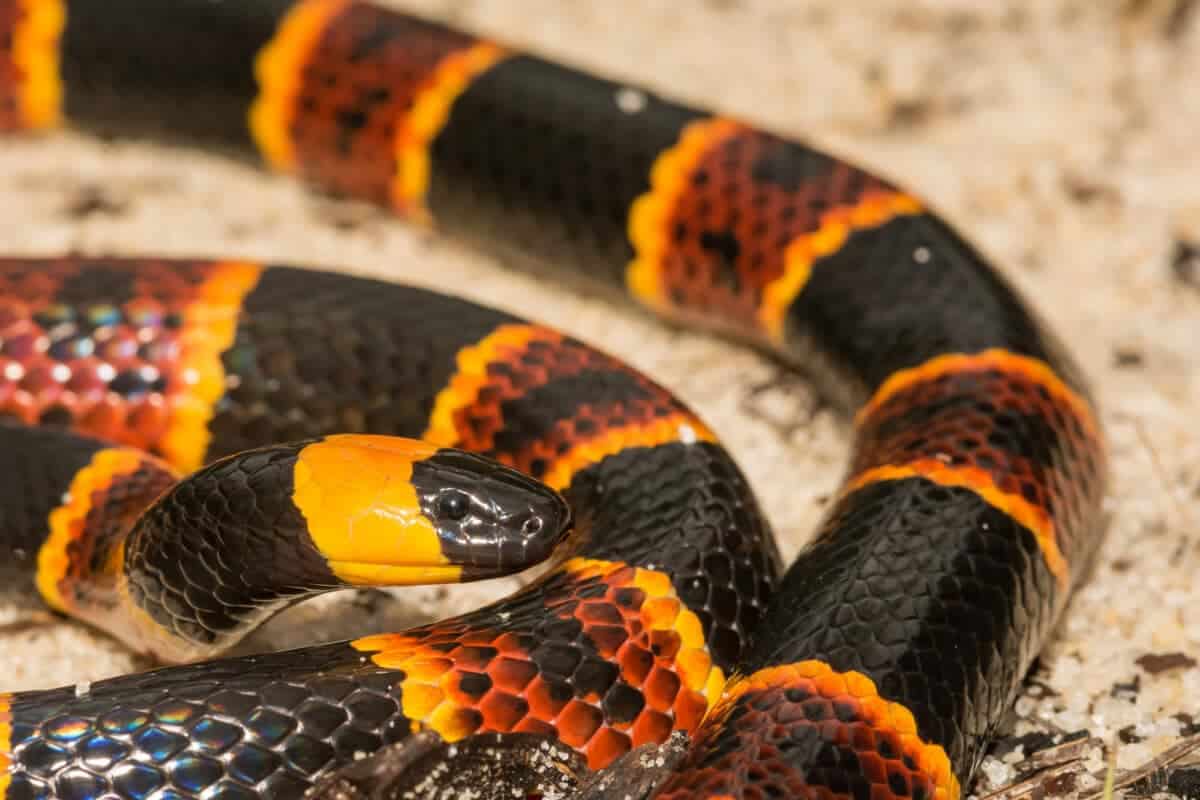
Protective Measures for Outdoor Activities
When engaging in outdoor activities in coral snake habitats, wearing appropriate clothing, such as long pants and closed-toe shoes, can provide a physical barrier against snake bites. Using snake-proof boots or gaiters can offer additional protection during hikes or when working in snake-prone areas.
First Aid Training and Snakebite Management
Obtaining first aid training, specifically in snakebite management, equips individuals with the knowledge and skills to respond effectively in case of an emergency.
Understanding basic first aid measures, including immobilization techniques and the importance of seeking immediate medical assistance, can be life-saving.
The Bottom Line
Prompt medical attention and treatment are essential in managing coral snake bites. Encouraging individuals to seek immediate medical help in case of an edge can significantly improve the chances of a successful recovery.
Spreading awareness about coral snake bites and educating communities about preventive measures can help reduce the incidence of bites and promote safety. This is especially true for coral snake bites, as the symptoms might go unnoticed – sometimes, there is barely any pain or swelling at the site of the bite.
By adopting preventive measures, seeking proper medical care, and supporting ongoing research on snakebite management, we can ensure the safety and well-being of individuals at risk of coral snake bites.
Thank you for reading this article! If you want to educate yourself even further on snake bites, read our post on the bite of the black mamba or how to deal with a cottonmouth bite.
- Magpie Bird Is Reunited with Her Dog Best Friend - April 24, 2024
- Dog Saves Another Dog From Drowning in Fish Pond - April 23, 2024
- Man On Motorbike Rescues Cat From Highway - April 23, 2024

